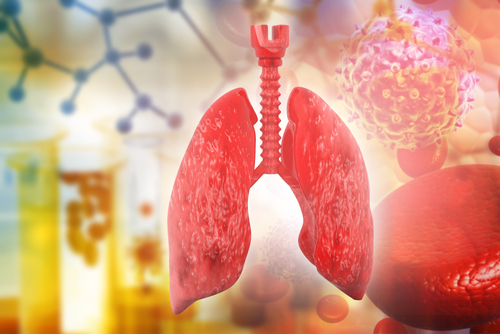Stem Cells Appear to Play a Role in Blood Vessel Problems Associated with Lung Disease

A type of stem cell facilitates faulty signals that lead to the tiny lung-vessel dysfunction in pulmonary fibrosis (PF) and other respiratory diseases, a study indicates.
The stem cells, known as mesenchymal progenitor cells, or MPCs, have the ability to evolve into other kinds of cells, including bone, cartilage, muscle and fat.
They could be used to repair lung-tissue scarring or fibrosis, the team said. The researchers also said that a better understanding of MPCs’ normal and disease-related roles could lead to better diagnoses and treatments for diseases such as PF, pulmonary hypertension and emphysema.
“It’s very exciting to discover something new like this cell type that is so important in maintaining microvascular and lung tissue structure and that has potential implications in disease and repair,” Susan Majka, an associate professor at Vanderbilt University, said in a news release written by Leigh MacMillan of Vanderbilt University Medical Center. Majka was senior author of the study.
The study, “Disruption of lineage specification in adult pulmonary mesenchymal progenitor cells promotes microvascular dysfunction,” was published in the Journal of Clinical Investigation.
A hallmark of most chronic lung illnesses is major changes in the structure and function of small blood vessels. When vessels remodel themselves — that is, change their structure — or deteriorate, a person can have difficulty inhaling and exhaling and experience shortness of breath.
The Vanderbilt researchers wanted to see if there were a connection between MPCs and respiratory diseases. They used mouse models and human-lung tissue to follow the stem cells during cell maturation processes under both normal and diseased conditions.
In a finding that was a first, the team discovered that the stem cells created an adaptive vascular structure to work around lung damage in mice with pulmonary fibrosis.
“It appears to be a form of ‘vascular mimicry’ — tubular structures that will circulate blood but are not normal blood vessels,” said Majka, who added that “it’s a new form of angiogenesis [blood vessel formation mechanism] that could get blood into the middle of fibrotic [scarred-tissue] areas.”
She said the “studies ended early after the injury, during peak fibrosis, and we don’t know yet” if the adaptive vessel is “helping repair the injury or is actually detrimental.”
By analyzing MPC gene expression in both normal and injured lungs, the team identified biomarkers that could be used to detect pulmonary diseases earlier. Expression is the process by which information from a gene is used to create a functional product like a protein.
Scientists may also be able to use the biomarkers to develop ways to repair damaged tissue, the team said.
“Treatment at an early stage of microvascular dysfunction may be most effective at decreasing progression or reversing the disease processes, improving the outcome and survival of patients at risk for PH [pulmonary hypertension],” the researchers wrote.
The findings may also help scientists better understand basic mechanisms of blood-vessel remodeling in other tissue where MPCs are expressed, including the kidneys, uterus and skin.
National Institutes of Health funding supported the research.







